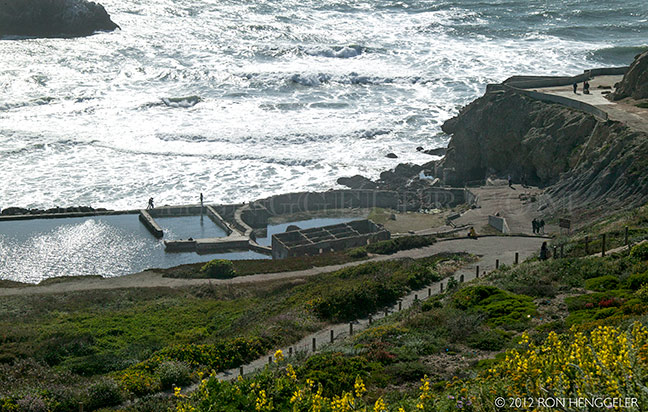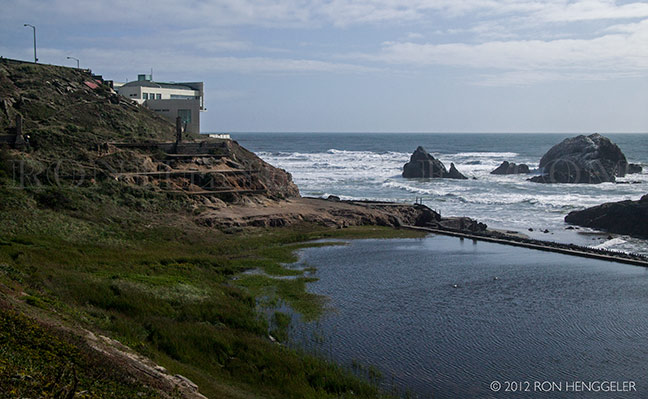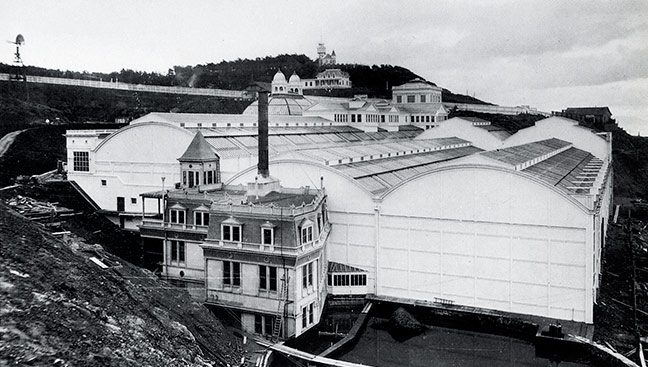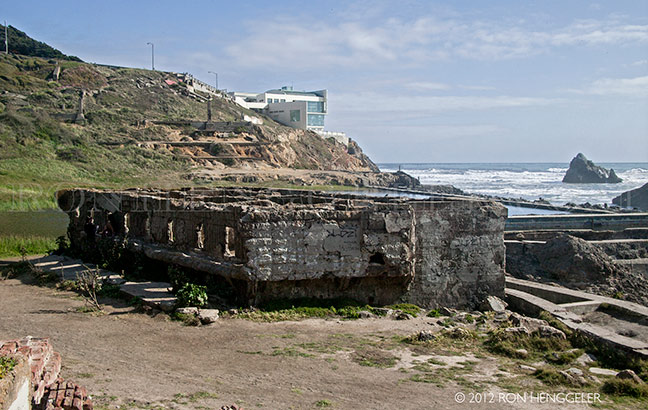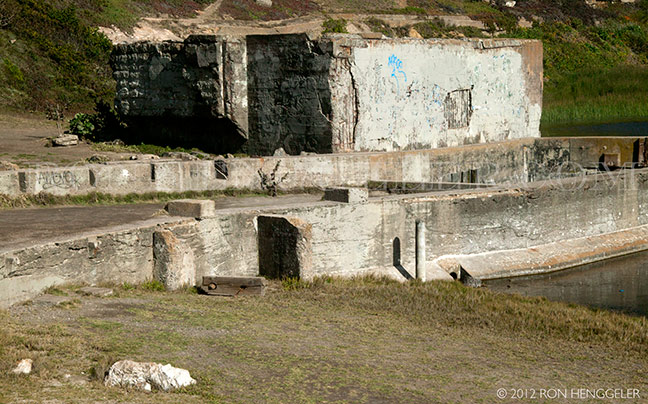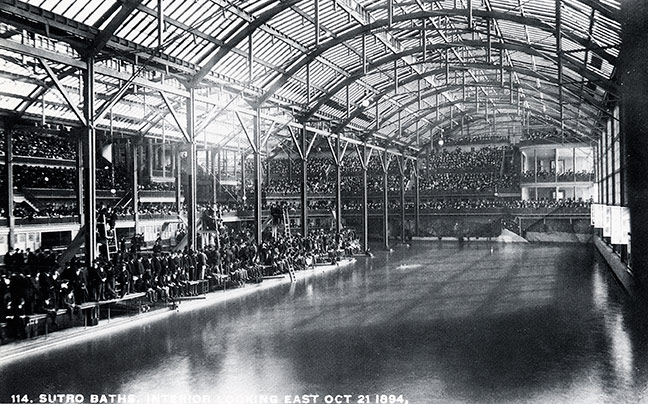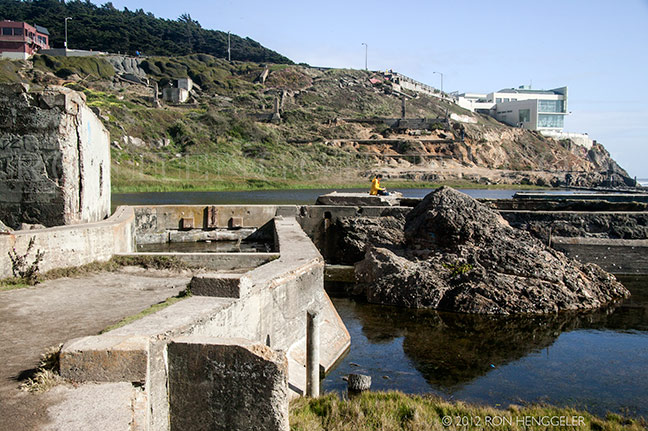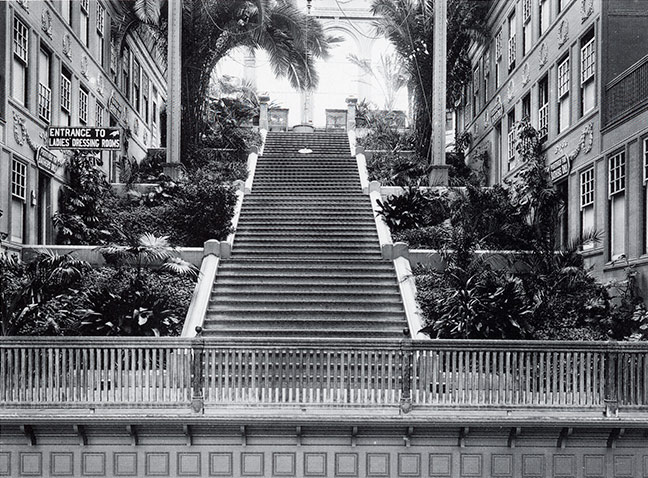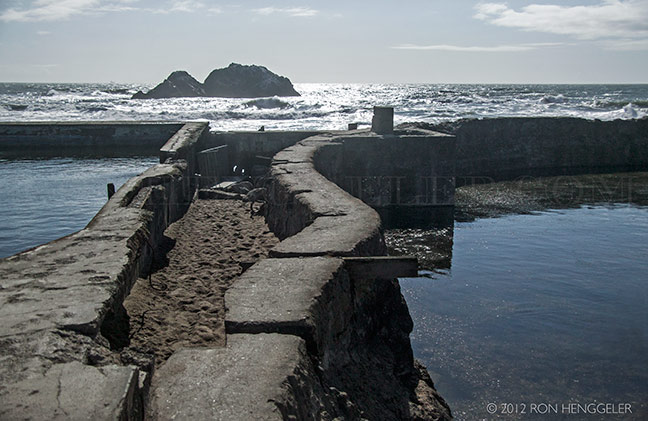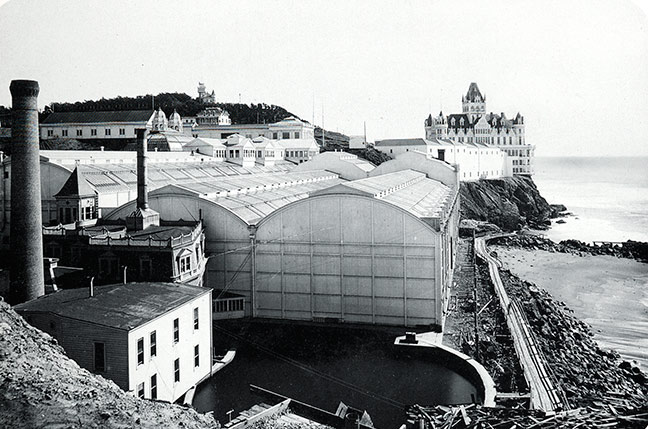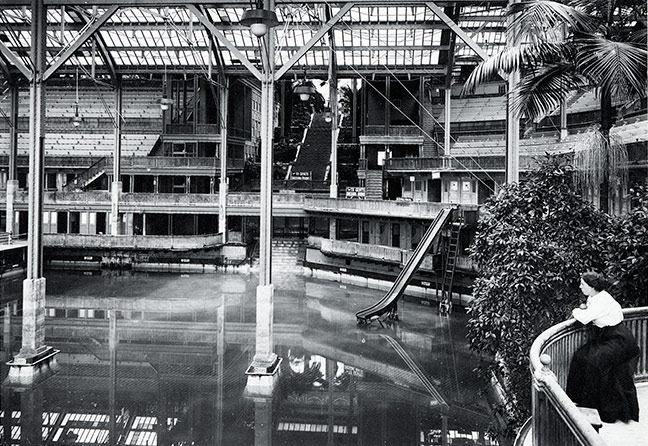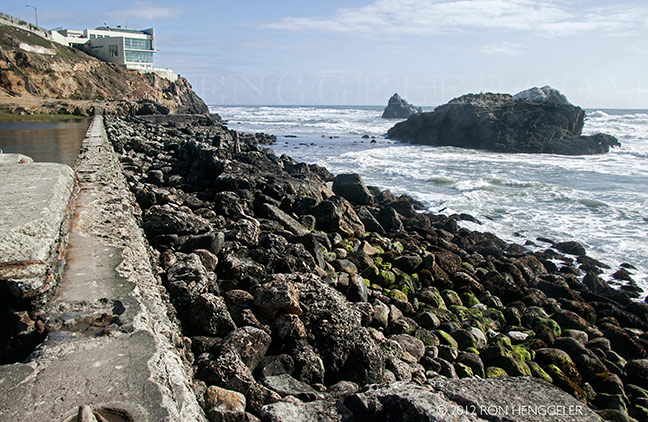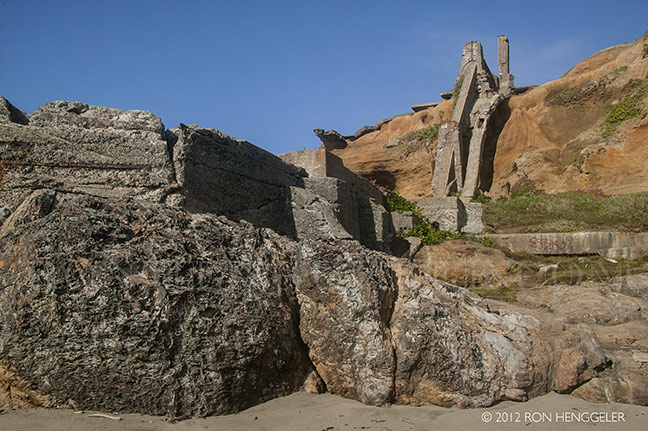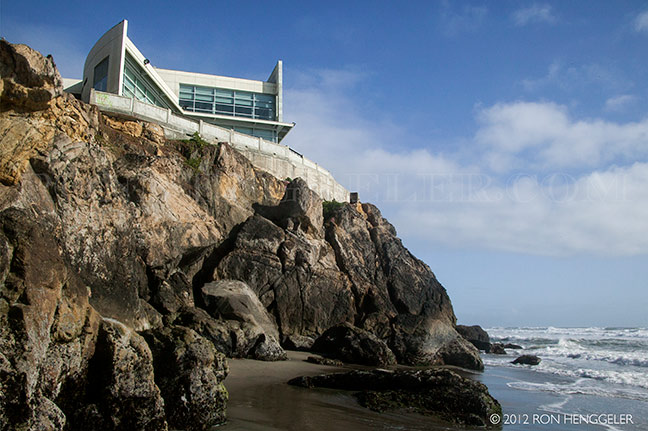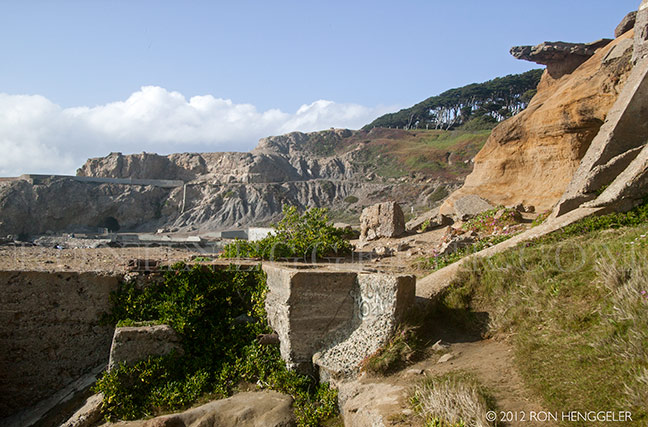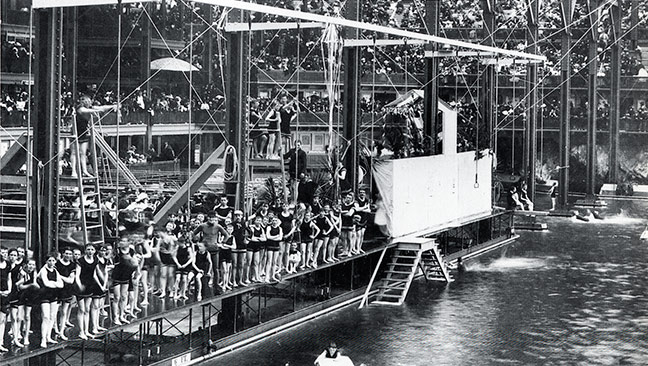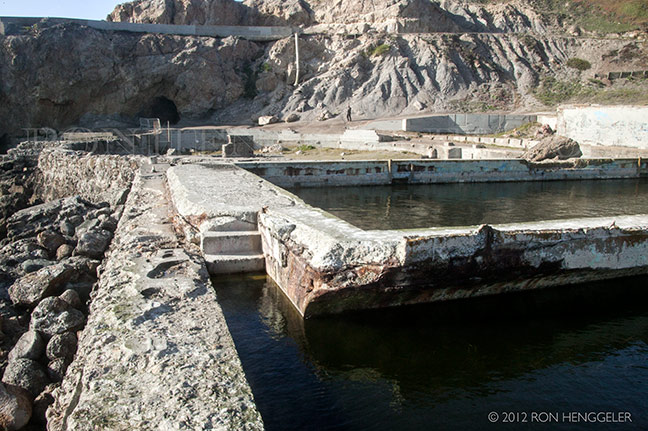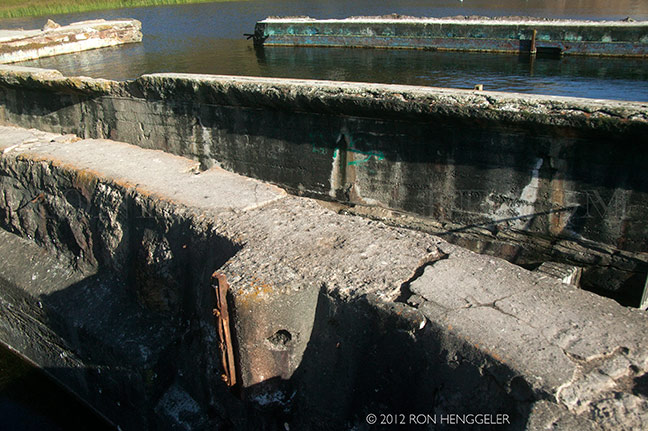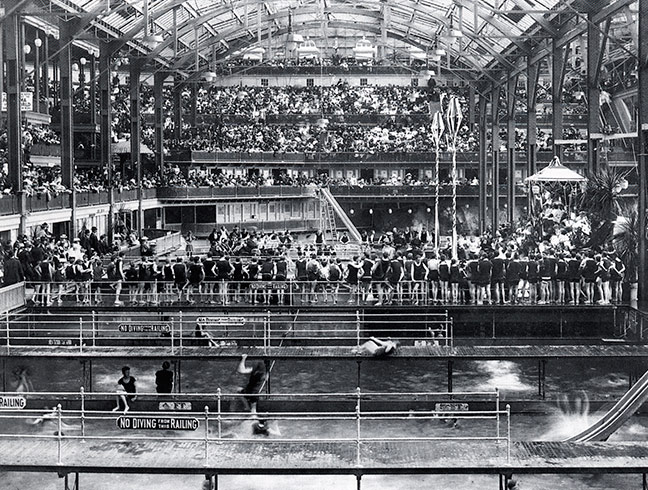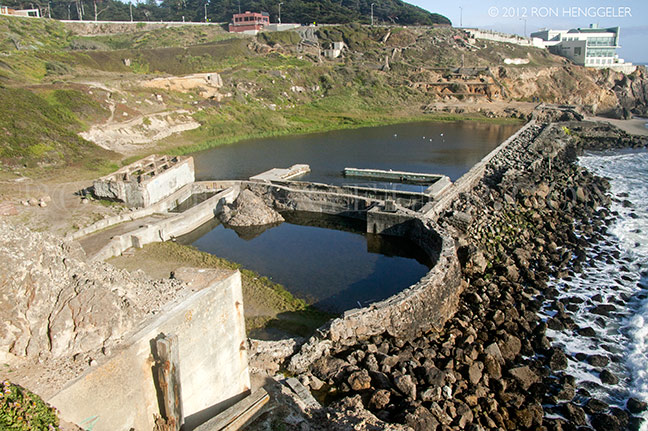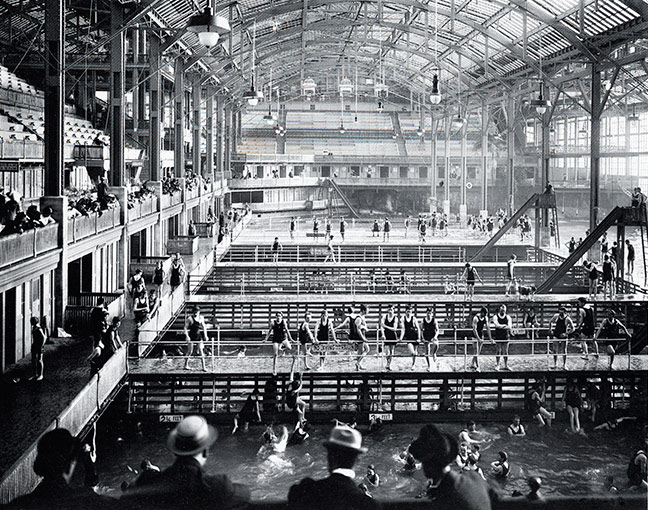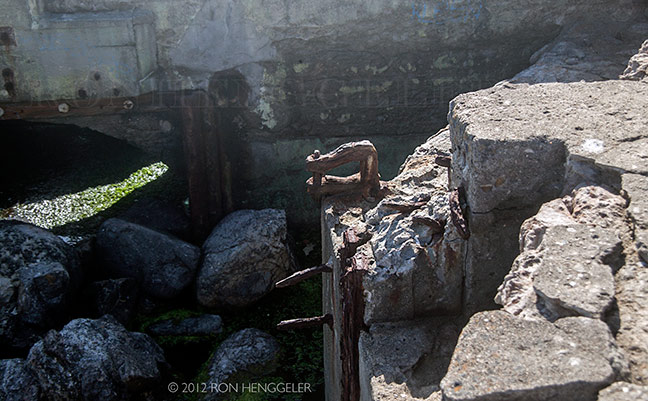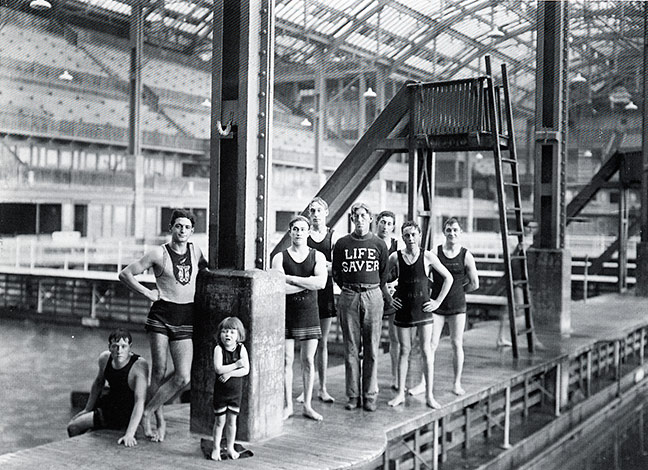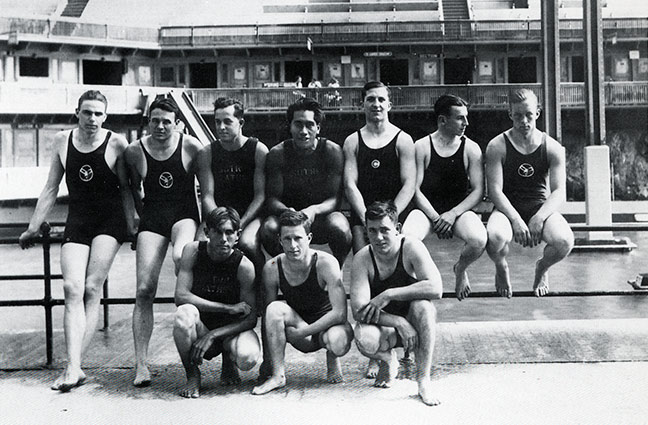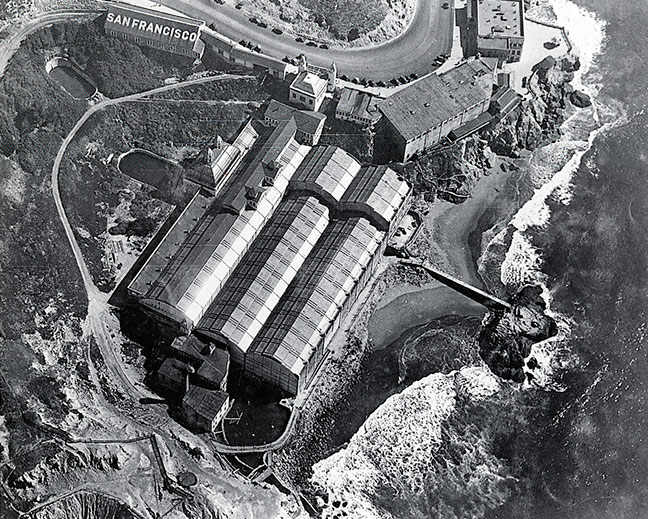RON HENGGELER |
June 11, 2012
The ruins of the Sutro Baths
The Sutro Baths were a large, privately owned swimming pool complex near Seal Rock in San Francisco, California, built in the late 19th century. The facility was financially unprofitable and is now in ruins. Lands around the site have been integrated into the Golden Gate National Recreation Area.
On March 14, 1896, the Sutro Baths were opened to the public as the world's largest indoor swimming pool establishment. The baths were built on the western side of San Francisco by wealthy entrepreneur and former mayor of San Francisco (1894–1896) Adolph Sutro. |
Before it burned to the ground, the structure filled a small beach inlet below the Cliff House, also owned by Adolph Sutro at the time. Both the Cliff House and the former baths site are now a part of the Golden Gate National Recreation Area, operated by the United States National Park Service. The baths struggled for years, mostly due to the very high operating and maintenance costs. Shortly after closing, a fire in 1966 destroyed the building while it was in the process of being demolished. All that remains of the site are concrete walls, blocked off stairs and passageways, and a tunnel with a deep crevice in the middle. The cause of the fire was arson. Shortly afterwards, the developer left San Francisco and claimed insurance money. |
Materials used in te vast structure included 100,000 sq ft of glass, 600 tons of iron, 3,500,000 board feet of lumber, and 10,000 cu yd of concrete. |
During high tides, water would flow directly into the pools from the nearby ocean, recycling the two million US gallons of water in about an hour. During low tides, a powerful turbine water pump, built inside a cave at sea level, could be switched on from a control room and could fill the tanks at a rate of 6,000 US gallons a minute, recycling all the water in five hours. |
|
|
|
|
|
The baths were once serviced by a rail line, the Ferries and Cliff House Railroad, which ran along the cliffs of Lands End overlooking the Golden Gate. The route ran from the baths to a terminal at California Street and Central Avenue (now Presidio Avenue). |
|
|
|
|
|
|
|
|
|
|
|
|
|
|
|
|
Newsletters Index: 2015, 2014, 2013, 2012, 2011, 2010, 2009, 2008, 2007, 2006
Photography Index | Graphics Index | History Index
Home | Gallery | About Me | Links | Contact
© 2015 All rights reserved
The images are not in the public domain. They are the sole property of the
artist and may not be reproduced on the Internet, sold, altered, enhanced,
modified by artificial, digital or computer imaging or in any other form
without the express written permission of the artist. Non-watermarked copies of photographs on this site can be purchased by contacting Ron.
